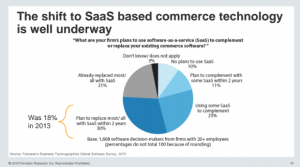
There’s nothing more frustrating than pouring your heart and soul to a blog post – only to have it ignored, even by your most avid of readers. Sadly, it happens to every blogger and veteran subject experts. It doesn’t matter whether you’ve been writing for days or years; you will have at least ONE article that didn’t get the attention you expected.
So, what do you do with those blog posts that need more traffic from the Web? Try these tricks and see the difference for yourself.
*Please note that these techniques are for particular blog posts only – not for an entire blog. Articles that have been published for a month or so but are NOT getting enough attention may need a little push. This is the aim of this article.
Begin with a Plan
Similar to your goals, your strategy should be Specific, Measurable, Attainable, Relevant, and Time-Bound (SMART). Include the following points when during the planning stage:
- How much traffic do you want this particular post to achieve? From which channels?
- Why should online audiences share or read your blog post?
- What tools are you going to use to measure visitor traffic? What metrics will you look at?
- How long will you implement this campaign?
In our case, we wanted to drive more traffic to a particular post about one of our favorite blogging tools, CoSchedule’s Free Headline Analyzer. Since it was published in April until December of 2015, it wasn’t getting that many visitors.

So this year, we decided to give it a little push not just to receive more site traffic, but also to help other bloggers and content marketers be aware of this amazing tool. We implemented six tactics for more than a month, from January to February, 2016. The following results show a report covering the months after the test, which was March to July:

As you can see, we gained more than 600 new users to this particular blog page in just a short amount of time.
So what are the six strategies we implemented?
Trick #1: Invest in Visuals
It’s no surprise that photos get more engagement on social media platforms than regular posts. In 2014, images accounted for 87 percent of total shared posts worldwide on Facebook alone. Take advantage of this information and start creating relevant images to help promote your blog posts on social media.

Tools like Canva make it fun, free, and easy to put together stunning visuals for any platform. If your blog post contains plenty of stats and figures, consider repurposing it into an infographic. Try Piktochart for this task.
If you don’t have time to create customized images, Buffer’s Pablo image tool can generate simple yet eye-catching pictures for your article. Pick from their choice of royalty-free photos, add text and/or your logo, and then share immediately.
Trick #2: Repeat Posts on Social Media
Reposting on social media is not taboo, as some digital marketers think it is. In fact, when done right, it can double traffic from social media channels to your blog posts. The key is knowing WHEN to publish on different platforms.
If you’re just not getting the traffic you want for a particular article, use Kissmetrics’ guideline on the best times to promote your link. In Twitter for example, you can repeatedly post about the same topic about three times a day until tomorrow. The same is not true for Facebook.

Quick tip: did you know that you can get more traffic to your links by simply pinning posts to your profile? You can also do the same for your business Facebook page. This one simple trick can increase traffic to your unpopular blog posts long after you tweeted about something else.

Like content, you can repurpose your social media posts but still include a valuable link. If you have stats in your article, cite that during your Tweet. Create a beautiful photo with a fun fact or quote taken from your blog posts for Facebook. Or why not ask a question to create intrigue?
Trick #3: Reach Out to Influencers using Direct Messages or Email
Think of Influencer marketing as the new networking.
Not only are you creating valuable professional relationships with trusted people in your industry, they can also help you gain needed traffic to your blog posts. Awesome as it sounds, it’s easier said than done. But if implemented well, you can get 16 times more engagement than other methods.
In this challenging endeavor, media monitoring tool, Mention, offers two email templates to make connecting with Influencers quick, simple, and less stressful. The first one is the outreach email, and it serves to showcase the value that the other part will be receiving if they take you up on your offer.

The second template is for follow-up purposes, just in case your first attempt was not seen or ignored.

Both these messages are: straight to the point, provides value to the Influencer, and ends with actionable steps. If you’re already connected with your target Influencers via social media platforms (like Twitter), you can send them a direct message instead.

Just make sure to still apply the three rules of outreach mentioned earlier.
Trick #4: Use as Reference in Guest Posts – When Applicable
Guest posting is NOT dead – but if used for the wrong reasons, you’d be compromising your credibility. If you’ve never written a guest post before, check out my post on SEMRUSH about common challenges for beginners in guest posting.
One of the most important things to remember about guest posting is that it’s about relationships. The folks who agree to publish your work trust that you deliver quality not only to their website, but to their audiences. So just because you want to boost traffic on a specific blog post doesn’t mean you’ll use it as a reference in your content.

Think about how it adds value in the piece you’re writing. After all, readers aren’t so quick to click on links. Make it worth their while by ensuring it’s helpful to the entire theme of the content.
Trick #5: Get Interactive
It doesn’t matter whether it’s a simple comment, praise, or argument, blog posts with obvious interaction looks alive and busy. People want to stay because there’s something happening. It feels exciting just to be there!
Whenever you encounter articles like that, what do you feel? Don’t you want something similar for your blog?
Sometimes, emails are not enough. They can get lost in junk folders, or not read at all. So aside from social media, how else can you promote your unpopular blog post without looking like an overly-aggressive marketer?
Try niche forums or commenting on your favorite platforms.

Warrior Forum for example, is one of the biggest online marketing forums where beginners and experts can share tips, content, and other related info. Think of joining forums as a) a way to gain additional knowledge from experts in your field, and b) to help others with your own specialties.
Don’t just register because you want to endorse your blog posts! Participate because you genuinely want to be part of an active community. Don’t worry: when the time is right, you’ll get your chance.
Trick #6: Use Post as Source for Other Works
This is perhaps the easiest trick you can use to promote your unpopular write-ups. Simply link to your past blog posts on your current article before publishing. This technique does two important things:
- It provides supplementary information for the reader.
- It helps boost your on-page SEO.
Let’s say your previous article about content marketing didn’t get the attention you expected. You can write a different piece, and then use that unpopular post as reference within your content. Should your new article go extremely well, it’s also going to have a positive effect on your unpopular piece.

You can do this backwards, too. If you have old pages that are no longer ranking in search for instance, update its content and insert relevant article links to help it rise to the top again. Also known as cross-linking, this is an old yet effective SEO strategy that has another function: to improve the ranking of old web pages.
Once you’ve freshen it up, you can use tricks 1 – 3 once more to reach a wider audience.
Wrapping It Up
Just because your blog posts didn’t receive a lot of love doesn’t mean you should shove it under the rug. There are still plenty of ways to bring it closer to the spotlight.
Whether you choose to promote it repeatedly on social media or use it as a reference during forum discussions, remember this ONE simple rule: you’re doing it to help others. You want them to learn something new, answer their question, or tickle their curiosity.
The moment you’re crystal clear about your objectives when writing articles, you will find that crafting techniques around it is easier than expected.
Don’t be the bitter blogger – BECOME a better one by learning from your experiences.
Digital & Social Articles on Business 2 Community(50)
Report Post






